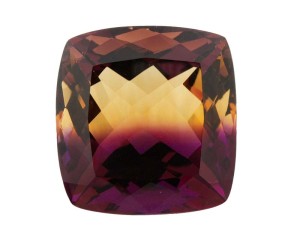The foundation

If we belong to a professional appraisal association, we’ve been probably exposed to at least the basics of proper appraisal methodology. Unfortunately, providing a credible report that will withstand extreme scrutiny requires more than just a basic understanding. A firm grounding in the requirements of the Uniform Standards of Professional Appraisal Practice (USPAP) and their correct application is a necessity. Even though USPAP originated in the United States, it is widely cited as authoritative in Canada and internationally. If you don’t have access to the current version of USPAP, it can be ordered in hard copy or digital format online. Fifteen-hour classes on the basics of USPAP are available and are highly recommended.
In my appraisal of the ruby ‘doorstop,’ I cited the specific definitions and requirements of USPAP I had followed, as well as all of the deviations from accepted appraisal practice I had found in the other report. However, even though I had documented numerous fatal flaws in the Chinese appraiser’s methodology and reasoning, along with carefully detailing my own approach and supporting market data, the final straw that absolutely discredited the Chinese appraisal was the decision to include a pricing structure as an appendix to the document. In it, they explained their fee was determined exclusively by the value the client requested. Specifically, the price list stated that if the client wanted their lab to provide a report with an appraised value of more than $1 million, their fee was one per cent of the value requested, although payment could be differed for 90 days to allow time for the client to sell the item. Once again, my Chinese colleagues took an unethical appraisal practice and carried it to an extreme.
Protecting the client’s investment

Few jewellery scams are of the magnitude of this particular case. A quick survey of jewellery offered for sale on eBay can be an eye-opening experience that shows how widespread misrepresentation has become. The buyer is the victim, whether it involves inflating grades or outright lies about the product’s identity, value, or quality. Our clients rely on us to protect them from fraudulent jewellery ‘investments.’ The best way to accomplish this is by clearly presenting the facts and our opinions in a manner that upholds recognized professional appraisal standards. We can use those same standards to discredit the seller’s valuation in an objective, dispassionate way. Failure to do so costs us credibility and could potentially damage our client’s legal defence or ability to recoup their money from a seller whose swindle has been exposed.
 Mark T. Cartwright, ISA CAPP, ICGA, CSM-NAJA, GG (GIA) is president of The Gem Lab, I.C.G.A., an independent American Gem Society (AGS)-accredited gem laboratory. He has been a jewellery designer, goldsmith, gemmologist, and appraiser for more than a quarter century. Cartwright can be contacted via e-mail at gemlab@cox-internet.com.
Mark T. Cartwright, ISA CAPP, ICGA, CSM-NAJA, GG (GIA) is president of The Gem Lab, I.C.G.A., an independent American Gem Society (AGS)-accredited gem laboratory. He has been a jewellery designer, goldsmith, gemmologist, and appraiser for more than a quarter century. Cartwright can be contacted via e-mail at gemlab@cox-internet.com.





